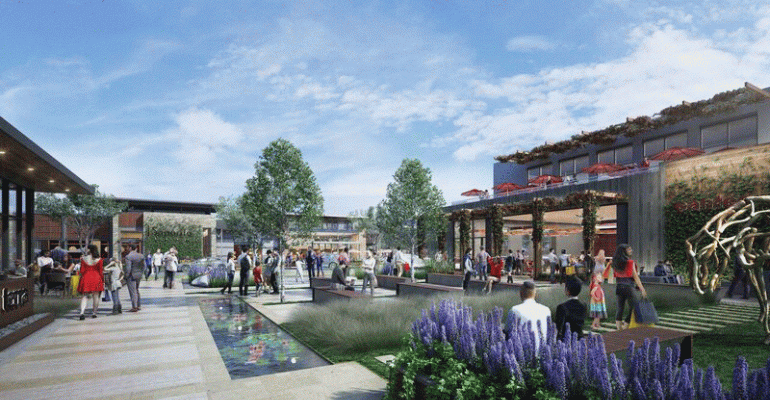Sales results from Black Friday and its younger sibling Cyber Monday may have surprised a few folks this year given the stubbornly high inflationary environment we’re navigating. To recap, a record $9.12 billion was spent online on the Friday after Thanksgiving – known as “Black Friday” since the 1950s – while Cyber Monday sales also hit a record $11.3 billion.
Notably, much of those sales were driven by the aforementioned inflation. That said, traffic metrics were also nominally positive, providing a fuller picture of consumer confidence in this strange moment. For Black Friday, in-store retail traffic rose by 7% versus last year, according to RetailNext. Placer.ai data shows some shopping malls, outlet malls and open-air lifestyle centers experiencing triple-digit traffic growth versus the daily average for Q1 through Q3. All told, the National Retail Federation reports that a record 196.7 million Americans shopped over Thanksgiving weekend – exceeding expectations by more than 30 million people. The total number of shoppers grew by nearly 17 million from 2021 and is the highest figure since NRF started tracking this data in 2017.
Doesn’t seem like inflation is slowing us down much this holiday season. But what does that mean for restaurants? Like everything the industry has endured this year, it’s complicated.
According to Fair Betting Sites, which analyzed data from Mastercard SpendingPulse and Adobe Digital, U.S. consumers who were out shopping during Black Friday weekend spent 23% more at restaurants than they did last year. That number is likely driven by both inflation and the high demand for restaurant gift cards this time of year. According to Credit Suisse, the restaurant industry sells the majority of its gift cards from Thanksgiving through New Year’s Day. This period can account for more than half of annual gift card sales for the average casual restaurant.
Good news, right? Well, simultaneously consumer confidence continues to dwindle, and November marked the fourth straight month of declines on this metric. So, maybe not “good” news as much as “mixed” news, which seems to be a theme this year in general.
That said, there are plenty of reasons to be hopeful, despite growing predictions of a recession. The Conference Board Consumer Confidence Index cited higher gas prices as a reason for November’s decline, for instance. Since that report was released, gas prices have fallen and are now at their lowest level since February. Earlier this week, GasBuddy projected gas prices could drop below $3 by Christmas. Lower gas prices tend to correlate with higher restaurant sales as consumers balance their spending wants and needs.
Consumers also have plenty of cash on hand to better manage inflation than they have in some time. According to the Wall Street Journal, U.S. households still have about $1.7 trillion in savings they built up during the pandemic, perhaps explaining why they’re not shunning restaurants despite double-digit menu increases. The National Restaurant Association reported that consumer spending in restaurants increased in October, the last month reported, while traffic also ticked up slightly versus the previous four months.
The association notes, “Looking ahead, restaurant operators are slightly more optimistic about business conditions in the month ahead.” Sticking with the “mixed” theme, however, those operators, while bullish about their sales prospects in the near term, remain pessimistic about the direction of the economy overall.
Friday’s jobs report may also provide more reasons for optimism, at least right now. According to the Bureau of Labor Statistics, restaurants and bars added over 62,000 jobs in November, nearly doubling the industry’s gains from October. Granted, the industry remains nearly 400,000 positions short of pre-pandemic levels, but progress is hard to come by these days, so we’ll take it.
Contact Alicia Kelso at [email protected]





